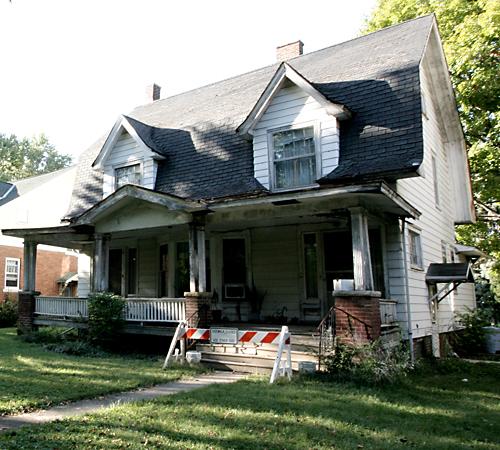Urbana looks to nurture landmarks

Houses on the 800 block of Main Street are now historic landmarks recently designated in the historic district of Urbana. Erica Magda
September 28, 2007
Taking a walk through downtown Urbana and the city’s historic east neighborhood reveals beautiful old buildings and homes that are potential historic landmarks. Urbana’s city council has discussed and showed a continuous effort in offering historic preservation incentive programs to encourage more property owners to apply for historic landmark status.
Urbana’s planning department staff presented the Council with seven different programs. Ideas include a historic marker program that will use plaques to display landmark status and waive building permit fees for any construction costs used for restoring a home. Another program establishes a recognition grant program, setting aside $5,000 to $10,000 a year in city funds specifically for historic preservation.
“Finally we’re actually giving substance to this interest,” said Dennis Roberts, a council member who is one of the driving forces behind the establishment of historic preservation incentive programs.
Recent discussions about historic preservation incentives have generated positive feedback from community members.
“This is the first time in Urbana’s history we have such proposals and that’s great,” said Ilona Matkovszki, an Urbana resident, at the City Council meeting on Monday.
Get The Daily Illini in your inbox!
Established in 1833, the history of Urbana is held in its buildings and architectural structures, Roberts said. Urbana residents should be enjoying and preserving the buildings, he said.
Urbana has more than 1,000 potential historic landmark buildings, said Alice Novak, adjunct professor in urban and regional planning.
Many residents in the past seemed to have a negative perception of historic preservation, said Rebecca Bird, planning intern with the city of Urbana. The Council met with Urbana’s historic preservation commission in February to look at why historic preservation was not accepted in the community, she said.
“We have a very walkable community and there needs to be something to look at,” Bird said.
Novak, also a consultant in historic preservation with her own company, said she attributes the past low level of interest in historic preservation to a lack of knowledge and people available to do the research.
People think they have to live in mansions to apply for landmark status, but most do not realize they are already living in a historic landmark.
Novak said she has seen an increasing number of communities offering outright financial incentives. She said she thinks any kind of grant or outright money will be a strong motivation for people to renovate.
There are guidelines that property owners need to meet to apply for landmark status. Guidelines include the structure built to display specific architectural style or beauty enhancing the neighborhood.
A significant event occuring at the site or if the property was the former home of a prominent member in the city can also qualify a building.
“The historic character of Urbana is one of the things that makes it unique, sets it apart and makes it such a wonderful place to live,” Bird said.






